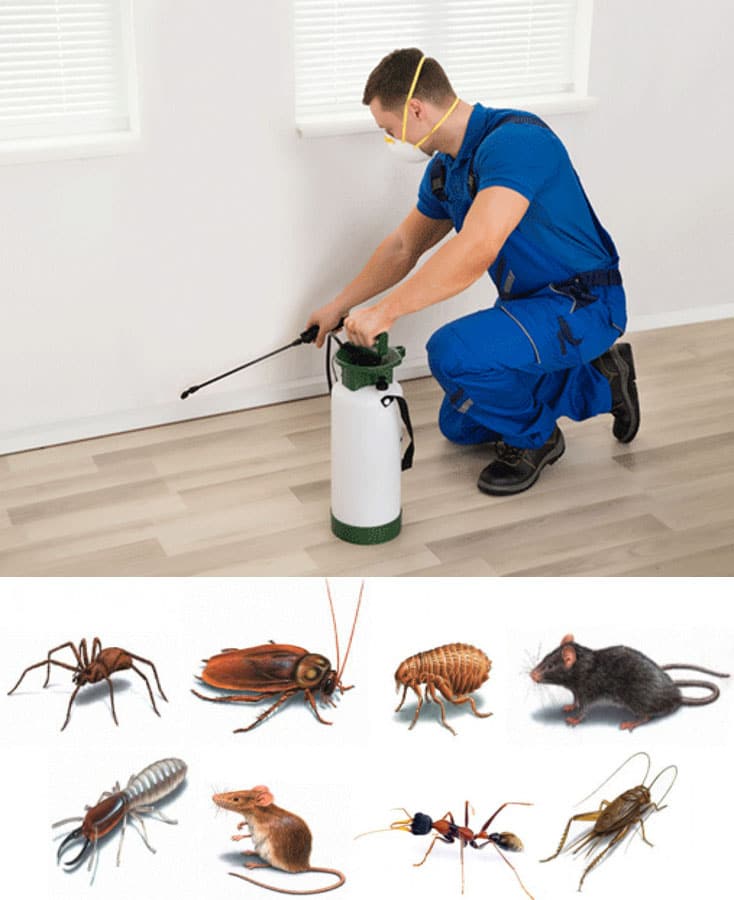A1 Charlotte Pest Control Companies - Your Regional Pest Professionals
Bed Bug Therapy Failure: Comparing Chemical Vs. Non-Chemical Solutions
In the world of bug control, specifically when handling the relentless problem of bed bugs, the option in between chemical and non-chemical treatment services can be an essential one. Both methods use unique advantages and downsides, influencing elements such as performance, safety and security considerations, and total expense. By examining the nuanced information of each technique, a more clear understanding of which course to seek in attending to a bed pest problem can be acquired.
Effectiveness of Chemical Therapies
Chemical treatments for bed bug problems have been widely acknowledged for their potent and rapid efficiency in eradicating these insects. When considering the efficiency of chemical treatments, it is critical to recognize that they can provide a complete and quick option to a bed insect problem. Specialist exterminators frequently count on insecticides to target bed bugs at different stages of their life cycle, including eggs, fairies, and adults. These chemicals usually work by interfering with the bed insects' nerves, leading to paralysis and ultimate death.
In addition, chemical treatments have the benefit of providing residual impacts, indicating that they can remain to eliminate bed insects also after the preliminary application. This recurring action is especially useful in combating any possible re-infestations. Furthermore, the quick activity of chemical treatments can bring relief to people dealing with serious bed bug infestations, permitting them to restore control of their home swiftly.
Safety Problems With Chemical Solutions
One important element that requires careful consideration when making use of chemical services for bed insect therapy is ensuring the safety of occupants and the setting. While chemical therapies can be efficient in eliminating bed bugs, they may pose dangers otherwise taken care of correctly. Among the main safety concerns with chemical remedies is the possible harm they can trigger to human health and wellness. Direct exposure to particular chemicals made use of in bed pest treatments can lead to breathing concerns, skin irritability, or other unfavorable responses, specifically in individuals with pre-existing conditions or level of sensitivities. Furthermore, inappropriate application or dosage of chemical pesticides can result in toxic residues remaining in the treated area, posturing lasting wellness dangers to residents.
In addition, the environmental effect of chemical solutions is one more substantial consideration. Some pesticides utilized in bed pest therapies might be harmful to beneficial insects, wildlife, and communities if they seep right into the dirt or water systems. It is essential to use chemical therapies sensibly, complying with safety and security standards, and considering less poisonous alternatives to mitigate these dangers and make sure the effective and secure monitoring of bed pest invasions.
Advantages of Non-Chemical Approaches
Considering the possible safety and security worries and ecological effect connected with chemical remedies for bed pest therapy, exploring non-chemical approaches provides an appealing alternative with several distinct benefits. Non-chemical methods supply a much safer choice for houses, particularly those with people, kids, or pet dogs sensitive to harsh chemicals. These strategies eliminate the threats of direct exposure to harmful substances, lowering the possibility for adverse health results. In addition, non-chemical therapies are eco-friendly, as they do not add to air or water air pollution, making them a lasting choice for insect control.
Additionally, non-chemical services can be efficient in targeting bed pests, including hard-to-reach locations where chemical treatments might not permeate. Approaches such as heat treatment, vacuuming, heavy steam cleaning, and cushion coverings supply detailed removal without the use of hazardous chemicals. In addition, non-chemical strategies can be less disruptive, needing minimal prep work and enabling quicker reentry right into treated locations. On the whole, choosing non-chemical bed pest treatment techniques not only focuses on safety and security and environmental management however additionally makes certain detailed and reliable insect control.
Limitations of Non-Chemical Treatments

In addition, non-chemical therapies typically call for numerous applications to achieve successful eradication. This can be taxing and may not always ensure full removal of all bed pests and their eggs, especially in concealed or hard-to-reach areas.
Moreover, the success of non-chemical treatments heavily relies on correct execution and thoroughness, which can be challenging for people without specialist proficiency. Poor application of non-chemical methods might result in incomplete elimination, bring about relentless problems and the need for additional treatments.
Consequently, while non-chemical therapies have their advantages, it is necessary to recognize these constraints and consider them when figuring out one of the most effective strategy for handling bed pest invasions.
Expense Comparison: Chemical Vs. Non-Chemical Options
Provided the limitations linked with non-chemical therapies, a crucial element to examine in the context of bed insect administration is the expense comparison between chemical and non-chemical alternatives. Chemical treatments usually involve the application of pesticides by specialists, which can range from $250 to $900 per room, depending on the seriousness of the problem and the dimension of the location to be treated. In comparison, non-chemical treatments like warmth therapy or steam can be a lot more costly, with expenses ranging from $1,000 to $6,000 for an entire home. While the preliminary price of chemical treatments might appear lower, several therapies may be needed to fully remove the invasion, potentially increasing the total price. On the various other hand, non-chemical options may give a more lasting and environmentally friendly remedy, although they can be cost-prohibitive for some individuals. Ultimately, when considering the price of bed bug therapy choices, it is important to weigh the in advance expenditures versus the performance and long-lasting sustainability of the chosen technique.
Final Thought

Taking into consideration the possible security worries and ecological impact linked with chemical solutions treating termites in your home for bed insect therapy, checking out non-chemical approaches provides a promising option with numerous distinct advantages.Offered the restrictions associated with non-chemical therapies, a necessary element to examine in the context of bed bug monitoring is the expense comparison in between chemical and non-chemical choices. In comparison, non-chemical treatments like warm treatment or vapor can be more expensive, with prices varying from $1,000 to $6,000 for a whole home. While the first cost of chemical therapies may appear lower, helpful site numerous therapies may be required to completely get rid of the infestation, possibly raising the overall expense.In conclusion, when comparing chemical and non-chemical bed pest treatment choices, it is essential to consider performance, safety, benefits, constraints, and expense.